Levers in Clinical Kinesiology: Types, Mechanics, and Practical Examples
1/32
There's no tags or description
Looks like no tags are added yet.
Name | Mastery | Learn | Test | Matching | Spaced |
|---|
No study sessions yet.
33 Terms
Axis
Fulcrum/pivot in a lever.
Force (F)
Effort applied, usually by muscle.
Resistance (R)
Load, which can be a body segment, gravity, or external weight.
First-class lever
Axis between force and resistance; configurations can be F-A-R or R-A-F.
Second-class lever
Configuration A-R-F; FA is always longer than RA, reducing effort needed to move a heavy load.
Third-class lever
Configuration A-F-R; force is in the middle.
Force arm (FA)
Distance from the axis to the point of force application.
Resistance arm (RA)
Distance from the axis to the center of resistance/load.
Mechanical advantage
A measure of the force amplification achieved by using a tool, mechanical device, or machine.
First-class lever example
Neck/atlanto-occipital joint balancing the head.
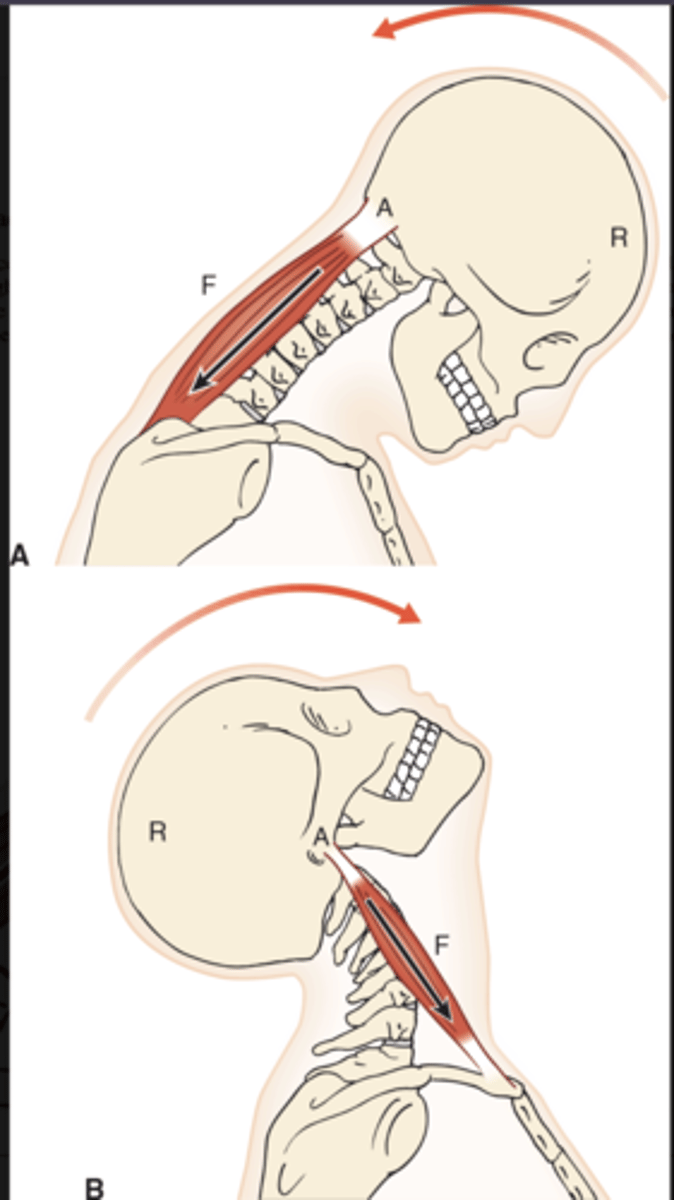
Second-class lever example
Wheelbarrow, where A = wheel, R = load in the barrow, F = person lifting handles.
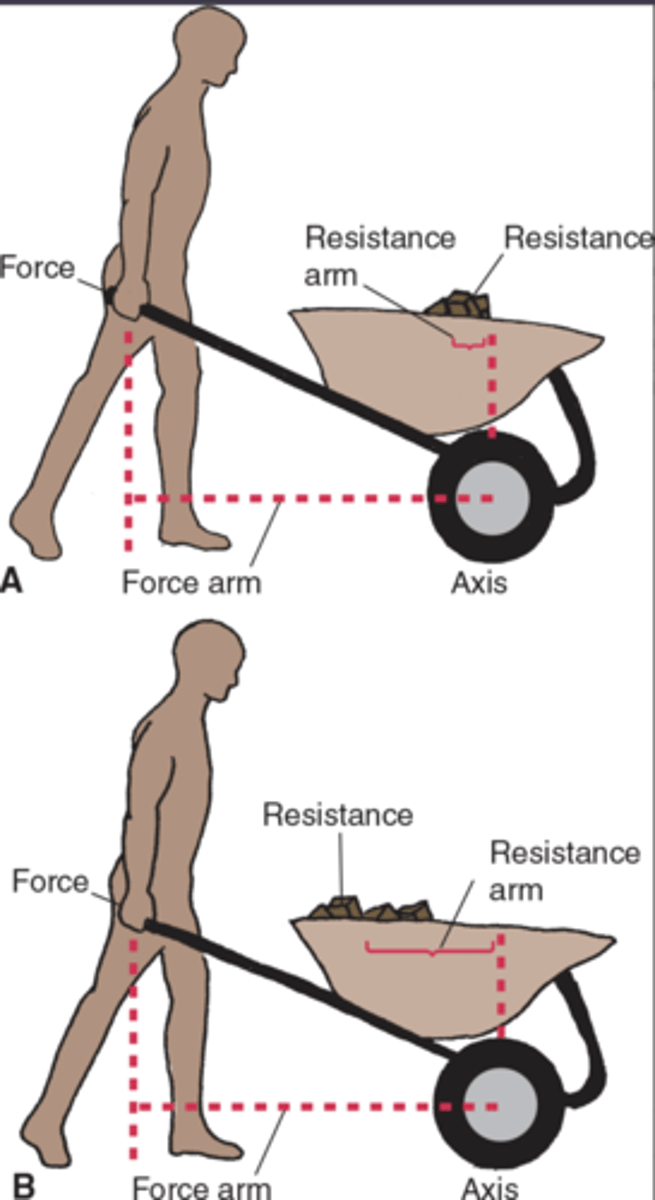
Effort needed with longer FA
Less effort is needed when FA gets longer relative to RA.
Effort needed with longer RA
More effort is needed when RA gets longer than FA, but the lever moves the load farther/faster.
Axis position effect on effort
Moving the axis toward the resistance increases FA and decreases the effort needed.
Effort balance example
With a 50‑lb load, FA 4 ft vs RA 2 ft requires ~25 lb of effort.
Load position effect in wheelbarrow
Moving the load closer to the wheel (axis) shortens RA and requires less effort.
Load position effect in wheelbarrow (cont.)
Moving the load farther from the wheel increases RA and requires more effort.
Lever-style faucet advantage
Lever-style faucet or door handles are easier to turn than round knobs due to mechanical advantage.
Effort equals load
Placing the axis midway (FA = RA) means effort equals load.
Daily-life example of first-class lever
A balanced pole across the shoulders with bundles on each end acts as a first-class lever.
Ankle plantarflexors
Rising on tiptoe is an example of a second-class lever.
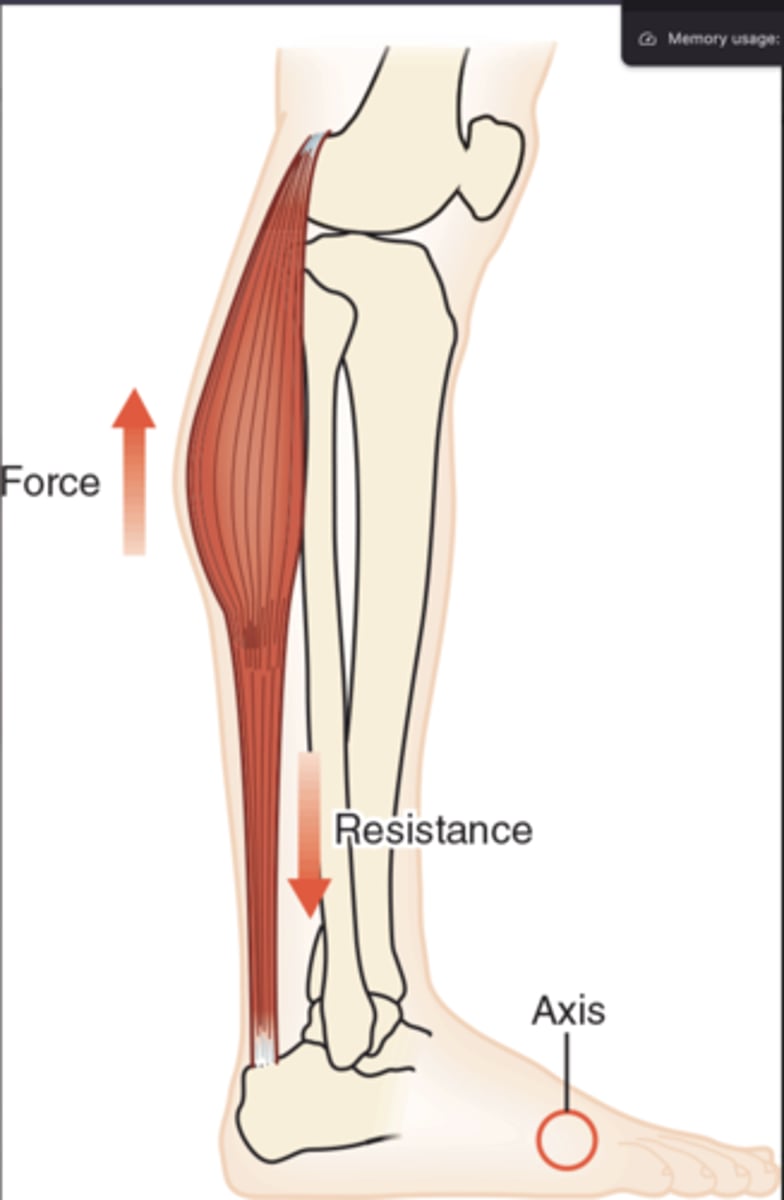
Round knobs
Act like A-R-F with short FA; converting to a lever handle lengthens FA while R stays the same, so less force is needed—useful for patients with pain/limited grasp.
Examples of third‑class levers
Biceps brachii flexing the elbow (A = elbow, F = biceps, R = forearm/hand weight). Pushing a boat away from a dock: pushing near the front (short FA) is harder but the boat swings farther; pushing farther back (longer FA) is easier but the boat moves a shorter distance.
Switching between lever classes
Yes. Changing load or movement direction can shift which element is in the middle. Example: With elbow flexion, the brachioradialis can act as a second‑class lever (A-R-F). Adding a weight in the hand may move the resistance distal, creating a third‑class configuration (A-F-R).
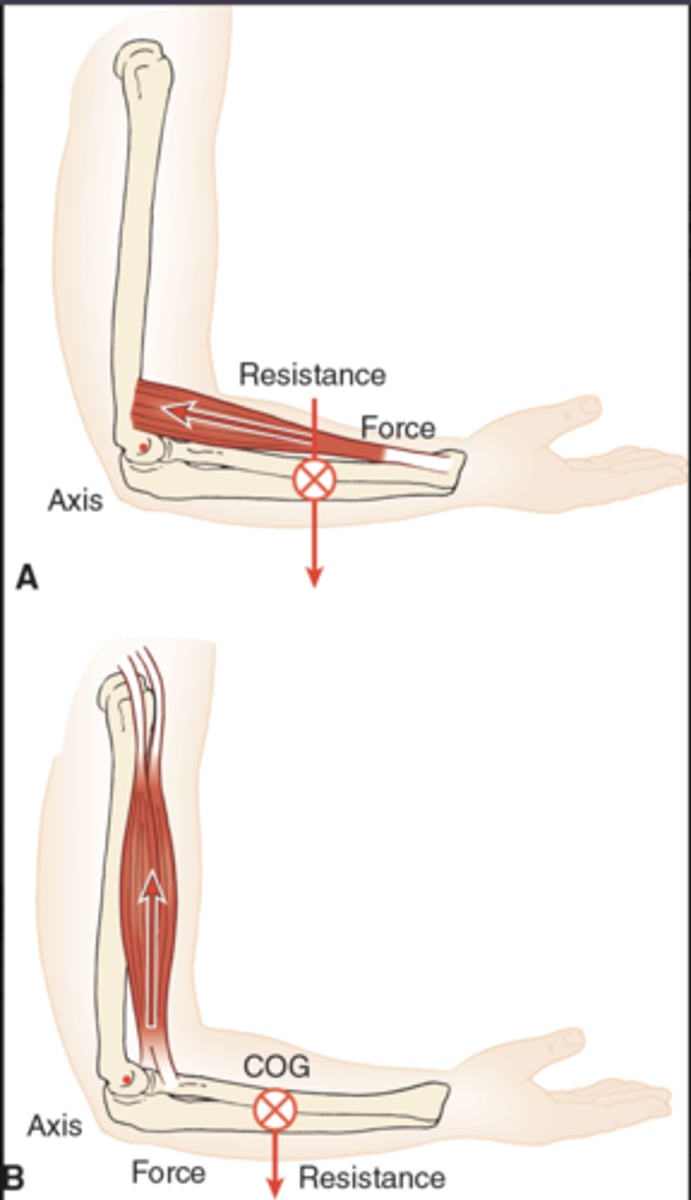
Biceps class change during lowering
When actively lowering from a flexed position, gravity/segment weight provides the force and the biceps becomes the resistance → A-R-F (second‑class). When the biceps shortens to lift, it's A-F-R (third‑class).
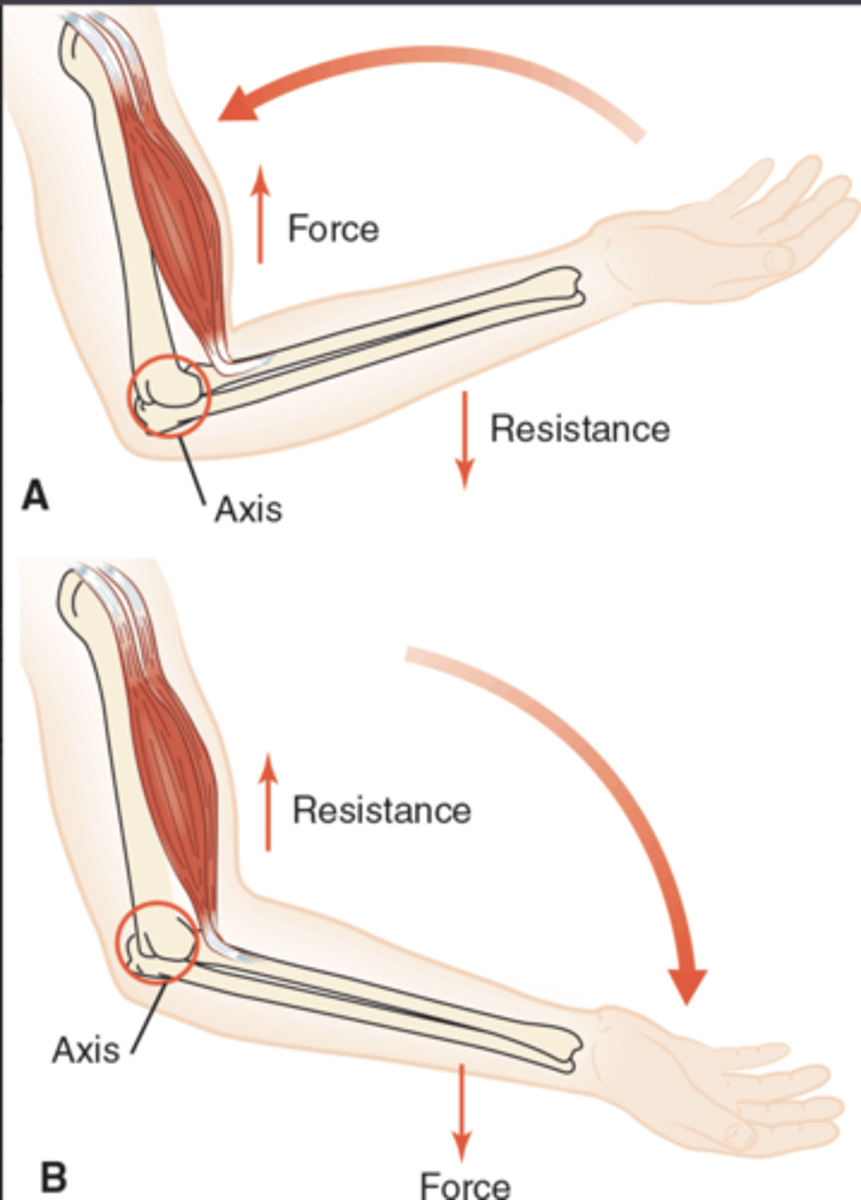
1st Lever Class
Axis is the middle element; variable FA vs RA; effort can be reduced by moving axis toward R; classic examples include neck balancing head and seesaw‑like setups.
2nd Lever Class
Resistance is the middle element; FA > RA; less effort; good for heavy loads; classic examples include wheelbarrow, tiptoe plantarflexion, and lever door handle.
3rd Lever Class
Force is the middle element; RA > FA; more effort; more speed/ROM; classic examples include biceps curl, many limb movements, and pushing a boat.
Lever-style handles for arthritis
Switching to lever‑style handles reduces effort because lengthening the FA (while R stays the same) converts the action to a more favorable second‑class setup → less required force.
Heel-raise training axis and force
Axis = MTP joints; Force = ankle plantarflexors; Resistance = body weight. This is a second‑class lever—great for lifting heavy loads with less effort.
Wheelbarrow load placement
To protect a painful shoulder, the load should sit closer to the wheel (axis) so RA shortens and the required effort at the handles decreases.
Biceps curl lever class
Third‑class lever (A-F-R): higher muscle force is required, but you gain speed and ROM at the hand.
Brachioradialis strength during lowering
With the added hand weight and during lowering, the configuration can shift toward a second‑class lever (A-R-F), making the movement feel easier compared with lifting.